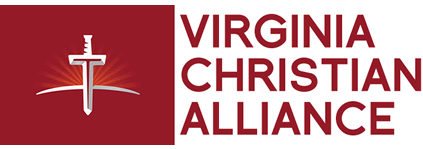Playback speed:
By Sandy Szwarc
© Szwarc 2025
As revealed in States’ Control of Schools, globalists and their political allies succeeded in establishing a powerful power structure to control education at state and local levels, virtually untouchable from parental influences.
Globalists have been accelerating their move to take control of education using another angle that gives the appearance of parent advocacy.
Billionaire venture capitalist globalists backed by aligned government officials are behind a movement to transform (“disrupt“) public education. The end objective is to increase control of education to these superrich oligarchs themselves.
They work through “school choice” legislation and school board elections, moving money and influence to private and charter schools they support. Their school curriculums then indoctrinate children to their globalist social vision. A few of these world billionaire globalists include:
- John Doerr – He’s a board member of New Schools Venture Fund which funds charter schools that are said to be innovative and promote racial and social equity, advance left progressive and CRT aligned curriculum, and use schools for social protest while de-emphasizing academics, according to Influence Watch; he donated $1.1 billion to establish a School of Sustainability under his name at Stanford; and the past decade has focused his investments on climate change, sustainability, education, AI and public health.
- Bill Gates – His globalist education initiatives, all far-left ideas, have been extensively covered in this series.
- Reed Hastings − Netflix co-founder and former board member of Microsoft and Facebook, Hastings has spent over $200 million to support charter schools and school choice, spent millions on school board elections for school choice candidates, as well as progressive social change and racial justice and equity causes, and UN global health initiatives; and served as President on the California State Board of Education.
- Powell Jobs − She co-founded XQ Institute which partners with Carnegie; its core mission is to disrupt, rethink and radically transform high school; its curriculum is pure globalist Marxism; she also pours millions to influence school board elections; and is president of Emerson Collective for social justice reform in education, which also funds influential school board candidates and digital curriculum providers such as Amplify.
- Mark Zuckerberg – He poured over $100 million in an effort to revolutionize American education with an online personalized learning platform he said could lead to “transformational improvements in student learning” − but which failed; $100 million to New Jersey charter schools were also failures; he continues funding similar initiatives other states, such as Hawaii, including a group of charter schools with Summit Public Schools that have adopted his platform − but have yet to produce any evidence that they improve learning; he also spent $65 billion in 2025 alone for experimental AI projects in schools, which he anticipates will yield massive profits for him and Meta.
- Michael Bloomberg – He founded Bloomberg Philanthropies (with Bloomberg Family Foundation) one of the largest philanthropies in the world, operating in over 700 world cities. He deserves a special note.
Bloomberg works alongside globalist partners with the World Economic Forum, including Bill & Melinda Gates, David Rockefeller Jr., and George Soros. He hosts events such as Bloomberg Global Business Forum at the UN General Assembly, and Bloomberg New Economy Forum. He is a UN special envoy on climate change and gives massive amounts to green energy, net zero initiatives, sustainable development, population growth, abortion, and environmental causes. He contributed $4.5 million to the UN’s climate change body (UNFCCC) last year alone and recently announced he would cover the Paris climate accord budget for the U.S.
All of the over 100 programs Bloomberg funds involve building larger governments, increasing regulations and control, and enacting UN sustainable goals.
 He coordinates public policies through Bloomberg Harvard City Leadership Initiative and Johns Hopkins Bloomberg School of Public Health, for example, to direct governors, mayors, city and municipal leaders and city innovators, distributing $3 billion last year alone.
He coordinates public policies through Bloomberg Harvard City Leadership Initiative and Johns Hopkins Bloomberg School of Public Health, for example, to direct governors, mayors, city and municipal leaders and city innovators, distributing $3 billion last year alone.
His Johns Hopkins Bloomberg School of Public Health (the source of those Covid-19 dashboards broadcast around the world 24-hours a day) also publishes a “public health” magazine promoting UN and WHO agendas and disinformation. The current issue focuses on planetary fears and ancient wisdoms of mystical spiritual connectedness.
After supporting Common Core in 2016, Bloomberg committed $750 million in 2021 to create 150,000 new charter schools in the U.S. He also supports Global Cities and Global Scholars in 46 cities with a global digital curriculum for students 10-13 years old, designed for an interconnected world.
Bloomberg Philanthropies, along with Carnegie Corporation, Bill & Melinda Gates, Zuckerberg Initiative, XQ, Walton Family Foundation and other globalist nonprofits also launched “The 74,” a news site promoting “school-choice.”
Charter schools have not proven to be the answer for many Christian parents
Public charter schools educate an estimated 3 millions students in America today. Charter school enrollments have grown, while traditional public school attendance is dropping. But charter schools have become the source of one of the most controversial debates in education.
The charter school movement began with well intentioned efforts to break the monopoly of government public schools. During the 1960s, both progressives and conservatives thought that privatizing education would enable market forces and competition, rather than the government, improve public education as failing schools closed. During the 1980s, the idea grew of charters that would move public funding to independently managed schools that could experiment with better ways to educate the nearly 80% of students who weren’t being served well.
Charter schools were intensely marketed beginning in the 1990s, mostly by those billionaire globalists, adding another powerful means to bring globalism ideologies to education while appearing to offer a nonpublic school option.
Charter schools have more flexibility to be innovative and try different things or specialize in certain academics, arts or athletics, and may receive grants from vested interests. Their variability was a school choice selling point to parents looking for options beyond public schools.
What was missed, however, was that these were not really free market school programs or free from government control and oversight. State-sanctioned schools, that operate under a government approved charter, quickly became indistinguishable from public schools.
The Institute of Education Sciences (a government organization) explains charter schools in more detail. Charter schools are publicly-funded and privately administered under a legislative contract (a charter), but held under the same academic and accountability standards as traditional public schools.
School districts themselves authorize nearly 40% of charter schools, state education agencies authorize another 28% of charter schools, with the rest under nonprofit or for-profit organizations, according to an article published by Harvard Graduate School of Education.
NEA and teacher unions have universally opposed any competition to public schools, even though progressives supported the idea of vouchers that redistributed public funds to prioritize low-income minority children for alternative schools. The pro-public school state Associations of School Boards, as in Texas, also oppose non-public school options and their power gives them the ability to block or limit new charter schools or funding allotments.
Some charter schools do well and better than traditional public schools. However, they are still part of the public school system. After 25 years and about 6,000 charter schools, overall, the charter school experiment has failed to be proven better, according to public school advocacy and lobbying groups such as the Network for Public Education. It reported that more than a quarter of charter schools close within the first five years of operation, which grew to 55% during Covid in 2020. The main reasons cited included declining enrollment, mismanagement, financial failure, and low academic performance. They reported that this instability and disruption can have long-term harmful impacts on student learning.
And, this research didn’t even consider the detrimental Marxist indoctrination in the curriculums!
Next: We’ll look at the battle over control of private and home schools.


